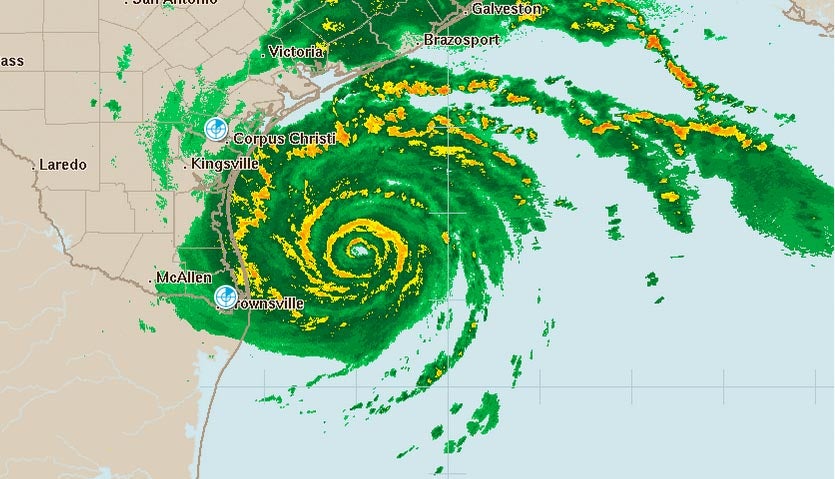From Artemis, Aug 25:
As hurricane Harvey continues to bear down on the Texas coastline, currently packing 110 mph winds as a strong Category 2, almost Category 3 storm, analysts at J.P. Morgan have taken a look at the exposure in the region and estimated that as much as 50% of an insurance industry loss could end up covered by reinsurance.
Our sister site ReinsuranceNe.ws reported earlier that should hurricane Harvey turn into a particularly large loss the percentage could even be higher, according to the analysts.
Loss estimates are notoriously difficult to make and for reinsurance arrangements, including exposed collateralized reinsurance layers, ILS transactions, or even catastrophe bonds, to take such a large share of the industry exposure Harvey would have to impact areas of particularly high insurance density and be a major storm by landfall, we’d imagine.
J.P. Morgan said that it would typically expect around 50% of the insurance industry loss from a hurricane like Harvey to be paid for by reinsurance capital providers.
Swiss Re and Munich Re have the highest exposure of the major four reinsurance firms, at 10%, of which 90% will be retained by each, while Hannover Re is 6% exposed with a 75% retention, and SCOR estimated to be 4% exposed, with a 75% retention.
ReinsuranceNe.ws explains J.P. Morgan’s thinking:
J.P. Morgan analysts combined the potential net loss for Europe’s big four players, and then compared this to its full-year 2017 expected net income and book value estimates.
...MOREThe analysis shows that a $5 billion insured loss total may result in an average impact to net income of 7% for the four reinsurers, increasing to 13% of net income with a $10 billion loss. Should Harvey drive insured losses of $20 billion, the impact to net income would be an average of 27% for the group, rising further still to 40% of net income in the event of a $40 billion insured loss.However, these major four reinsurance firms have large catastrophe budgets remaining, after a relatively benign start to the year.
J.P. Morgan says that even a $10 billion industry loss event due to hurricane Harvey, “would be unlikely to exhaust the remaining natural catastrophe budgets across the sector, with a larger loss of $20bn-30bn required to cause an overrun.”...
Also at Artemis, Aug. 25:
Hurricane Harvey – catastrophe bond exposure
Here’s a quick look at just how much of the near $30 billion of outstanding catastrophe bonds could be exposed to a major Texas hurricane, be that hurricane Harvey that is rapidly approaching Category 3 on approach to the state, or any other major storm.
It’s important to note that we don’t have the actual data for expected losses of every cat bond in our Deal Directory, so establishing precisely how much of the outstanding catastrophe bond market is exposed to hurricane Harvey isn’t possible.
But we can take a look at cat bonds that are Texas named storm and hurricane exposed and those U.S. wind cat bonds that tend to cover every hurricane exposed state on the east and Gulf coasts, as well as a few multiperil bonds.
For Texas only exposure, there are only the two outstanding Texas Windstorm Insurance Association (TWIA) cat bonds, which total $1.1 billion of exposure, $400m from Alamo Re Ltd. (Series 2017-1) and the $700m Alamo Re Ltd. (Series 2015-1).
Both are exposed to Texas hurricane risks, with attachment points set relatively high as they sit above reinsurance in the TWIA tower.
As well as this $1.1 billion of pure Texan hurricane exposure, U.S. hurricane exposed cat bonds (either pure wind or mult-peril) which have some Texas exposure in the majority of cases (a handful may not) in our Deal Directory total a huge $10.6 billion from 39 outstanding cat bond deals.
Clearly it would take a hurricane much larger than Harvey to create losses to all of these cat bonds and in fact the majority have attachment points that are far too high to be troubled by Harvey over the coming days, but it’s useful to see just how much of the cat bond market carries U.S. wind risk and could be exposed to the storm.......MUCH MORE, including a couple updates.












